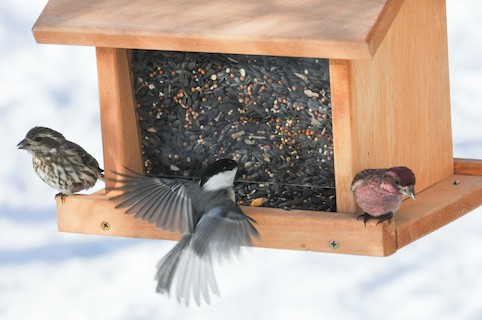MONTPELIER, Vt. – The Vermont Fish & Wildlife Department recommends Vermonters wait to put up bird feeders until Dec. 1 to avoid attracting bears.

Doug Morin, Vermont Fish & Wildlife’s bird project leader said, “This may be a particularly good winter for attracting winter birds arriving from Canada, including Evening Grosbeaks and Common Redpolls. Black oil sunflower is a good seed choice that will attract a variety of birds, and folks may want to try other seeds or suet to attract certain species. Thistle, for example, attracts many of the finches. Gardeners will find leaving late-blooming flowers uncut provides seeds which can also attract birds.”
While watching your bird feeders, you can participate in one or more bird monitoring projects by looking up the Audubon Christmas Bird Count, the Great Backyard Bird Count, and Project Feeder Watch – all three collect important information to understanding bird populations.
The Fish & Wildlife Department offers these tips for bird-friendly bird feeding:
- Keep cats inside. Domestic cats are the leading cause of bird death in North America, and feeders can make birds particularly easy prey.
- Place feeders closer than four feet or farther than 10 feet from a window. Being close to or far from a window reduces bird collisions.
- Clean feeders regularly. To eliminate harmful bacteria and viruses, feeders should be washed every few weeks with a 10% bleach solution, then rinsed and allowed to dry before refilling.
Feed birds only between Dec. 1 and April 1, but remove feeders if you see signs of bears. Most bears should be in dens during this time, but some delay entering their dens while even those that have denned may re-emerge to feed if there is a period of warm weather. Bears that learn to get food from people will continue to do so, potentially leading to property damage and dangerous encounters with people, which can result in the bear’s demise.